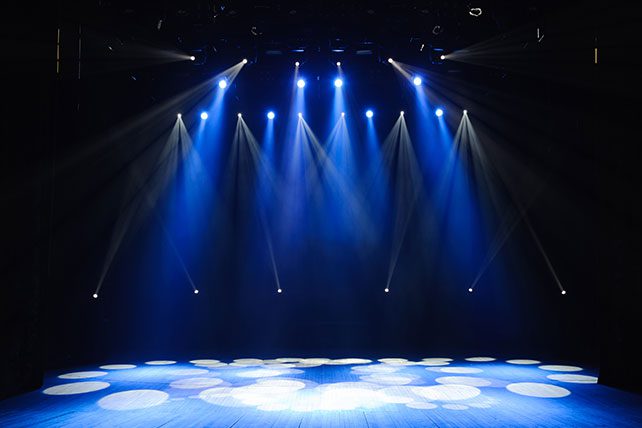3. Choose the Right Fixtures for Your Space
Not every church needs professional-grade concert lighting. Many churches can achieve great results with budget-friendly options that are scaled to their space. Common fixture types include:
-
LED PAR lights: Versatile, energy-efficient, and capable of producing multiple colors
-
Spotlights or ellipsoidals: Provide focused beams and are great for highlighting speakers or soloists
-
Wash lights: Fill larger areas with soft, even light
-
Moving heads: More advanced fixtures that can be programmed to move and change colors or shapes during service
Take time to consider your room’s size, ceiling height, and lighting control capabilities before purchasing.
4. Use Color Intentionally
Color has a powerful psychological and emotional effect on an audience. In church stage lighting, color can reflect the tone of a sermon, the emotion of a song, or the meaning of a liturgical season. Blue often conveys peace and reflection, red can represent passion or sacrifice, and gold might suggest celebration or glory. Choose color palettes that align with the message and avoid overwhelming the room with bright, clashing hues.
RELATED: Church Lighting Basics
5. Implement a Lighting Control System
Having a way to control your lights—whether it’s a physical console, computer software, or a mobile app—is essential. With a lighting controller, you can pre-program scenes, transitions, and effects to align with your service flow. This eliminates guesswork and helps your team create consistent, professional-looking lighting each week. Start simple and expand as your team grows in skill.
6. Keep It Simple and Avoid Distractions
One of the biggest mistakes churches make with lighting is overdoing it. Lights flashing, changing constantly, or drawing attention away from worship can feel more like a performance than a spiritual gathering. Subtlety is key. The best lighting goes almost unnoticed because it supports the atmosphere without overpowering it.
7. Train and Empower Your Team
Church stage lighting requires a team of volunteers or staff members who are trained and comfortable with the equipment. Offer opportunities for hands-on learning, provide clear instructions and goals, and emphasize the purpose of lighting in worship. A team that understands the “why” behind what they do will make better decisions and serve more effectively.
Church stage lighting doesn’t have to be intimidating or expensive. With a clear purpose, a basic understanding of lighting types, and the right equipment for your space, you can create an environment that supports worship and enhances the message. Start small, focus on consistency and clarity, and always let the light serve the greater goal of helping people encounter God. As your team and resources grow, your lighting system can grow with you—always pointing back to the One who is the Light of the world.

